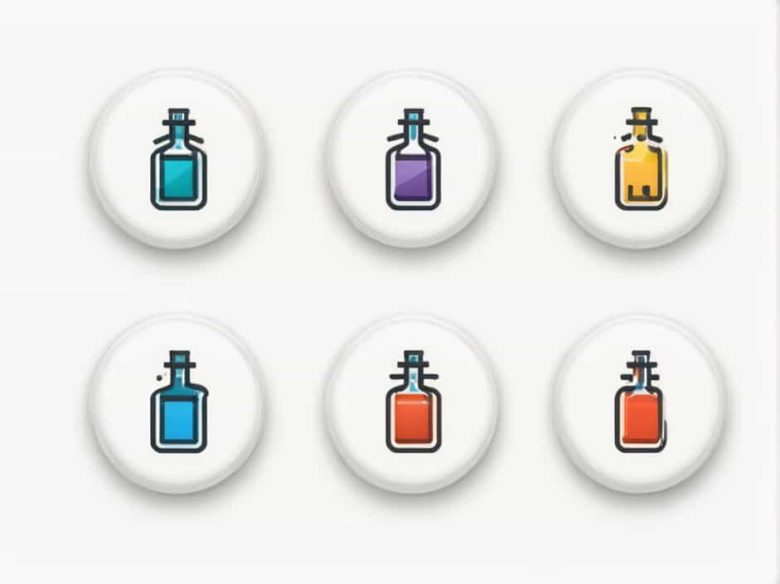Ethyl alcohol is one of the most widely used chemicals in the world. It is present in alcoholic beverages hand sanitizers industrial solvents and medical applications. While most people refer to it as ethyl alcohol its correct IUPAC name follows systematic chemical naming conventions.
This topic explores the IUPAC name of ethyl alcohol its chemical structure properties and various applications.
What Is the IUPAC Name of Ethyl Alcohol?
The International Union of Pure and Applied Chemistry (IUPAC) provides standardized names for chemical compounds. The IUPAC name for ethyl alcohol is:
Ethanol
Why Is It Called Ethanol?
The name “ethanol” follows IUPAC naming rules:
- The root name “eth-” indicates the molecule contains two carbon atoms (from ethane).
- The “-ol” suffix signifies the presence of a hydroxyl (-OH) functional group making it an alcohol.
Thus the IUPAC name for ethyl alcohol is ethanol (C₂H₅OH).
Chemical Structure of Ethanol
The molecular formula of ethanol is C₂H₆O or C₂H₅OH indicating two carbon atoms six hydrogen atoms and one oxygen atom.
Structural Representation
The structure of ethanol consists of:
- A two-carbon (C₂) chain
- A hydroxyl (-OH) group attached to one carbon atom
- Hydrogen (H) atoms filling the remaining valency
The structural formula is written as:
This shows that the hydroxyl (-OH) group is bonded to an ethyl (C₂H₅) group hence the common name ethyl alcohol.
Physical and Chemical Properties of Ethanol
Physical Properties
| Property | Value |
|---|---|
| IUPAC Name | Ethanol |
| Molecular Formula | C₂H₆O or C₂H₅OH |
| Molar Mass | 46.07 g/mol |
| Appearance | Colorless liquid |
| Odor | Characteristic alcoholic smell |
| Boiling Point | 78.37°C (173°F) |
| Melting Point | -114.1°C (-173.4°F) |
| Solubility | Completely soluble in water |
| Density | 0.789 g/cm³ |
Chemical Properties
-
Flammability: Ethanol is highly flammable and burns with a clean blue flame:
C_2H_5OH + 3O_2 rightarrow 2CO_2 + 3H_2O -
Polarity: The hydroxyl (-OH) group makes ethanol polar allowing it to dissolve in water and other polar solvents.
-
Reaction with Sodium: Ethanol reacts with sodium (Na) to form sodium ethoxide (C₂H₅ONa) and hydrogen gas:
2C_2H_5OH + 2Na rightarrow 2C_2H_5ONa + H_2 -
Dehydration to Ethene: Ethanol can be dehydrated to form ethene (C₂H₄) when heated with a strong acid:
C_2H_5OH xrightarrow{H_2SO_4} C_2H_4 + H_2O
Production of Ethanol
Ethanol is produced by both natural fermentation and synthetic chemical processes.
1. Fermentation Process
Ethanol is commonly produced by fermenting sugars (glucose fructose) using yeast:
This process is widely used in the production of alcoholic beverages bioethanol and pharmaceuticals.
2. Industrial Synthesis (Hydration of Ethene)
Ethanol can be synthesized from ethene (C₂H₄) by reacting it with water in the presence of an acid catalyst:
This method is used in large-scale industrial ethanol production.
Common Uses of Ethanol
Ethanol has various applications in different fields including medicine industry and energy.
1. Alcoholic Beverages
Ethanol is the primary psychoactive ingredient in alcoholic drinks like beer wine and spirits. It is produced naturally through fermentation.
2. Fuel and Energy
- Bioethanol: Ethanol is used as a renewable fuel additive in gasoline to reduce emissions.
- E85 Fuel: A mixture of 85% ethanol and 15% gasoline is used in flex-fuel vehicles.
3. Medical and Pharmaceutical Uses
- Disinfectant: Ethanol is an active ingredient in hand sanitizers and antiseptics.
- Solvent: It is used in pharmaceutical formulations for dissolving active ingredients.
- Anesthetic: Historically ethanol was used as a sedative and anesthetic.
4. Industrial and Household Applications
- Solvent: Ethanol is a universal solvent in perfumes cosmetics and chemical extractions.
- Cleaning Agent: Used in window cleaners disinfectants and surface cleaners.
- Preservative: Ethanol helps preserve biological specimens and herbal extracts.
Safety and Health Effects of Ethanol
Ethanol is generally safe in controlled amounts but can be hazardous in excessive concentrations.
1. Effects on the Human Body
- Low Doses: Can cause relaxation euphoria and mild intoxication.
- High Doses: Leads to dizziness impaired judgment and loss of coordination.
- Chronic Consumption: Can cause liver disease addiction and neurological damage.
2. Fire and Explosion Hazard
- Ethanol is highly flammable and should be stored away from open flames.
- It evaporates quickly and can form explosive vapor-air mixtures.
3. Poisoning Risks
- Ingestion of pure ethanol can cause severe poisoning and respiratory failure.
- Denatured ethanol contains additives that make it toxic and unfit for human consumption.
The IUPAC name of ethyl alcohol is ethanol and its chemical formula is C₂H₅OH. It is a versatile compound with applications in alcoholic beverages fuel medicine and industry.
Understanding its structure properties and uses helps in the safe and effective utilization of ethanol across different sectors.



